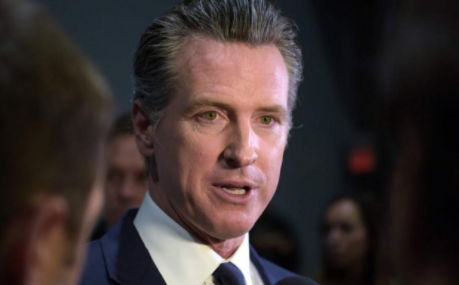Democratic-led states across the United States are vigorously pursuing the environmental goals set by the Biden administration, but experts are warning that this pursuit may come at the cost of several wildlife species.
One such state, California, is racing ahead in its transition to green energy. However, concerns are being raised by experts, including a former official from the California Fish and Wildlife Department, about the potential consequences of this rapid shift.
California has set an ambitious target to achieve 100 percent “carbon neutrality” by 2045, driven by the passage of Senate Bill 100 in 2018. According to the California Energy Commission, nearly 35 percent of the state’s energy generation was from renewable sources as of 2021.
John Baker, a retired assistant chief with over 30 years of experience at the department, is sounding the alarm. He argues that the Democratic push for green energy in the name of combating climate change is having a detrimental impact on the natural world, particularly on various wildlife populations, with birds being particularly vulnerable.
“In the name of green energy, we’re sacrificing wildlife species,” Baker warns.
“Because of the power mandates, we’re unable to enforce [protecting those species].
“I don’t think they have thought what that cost is to us as Californians and to the environment as a whole.”
According to Baker, the intense focus on green energy, often seen as the “greater concern,” tends to blind people, especially politicians, to the consequences it brings for animals.
He said one group of wildlife greatly affected by such green policy are predatory birds—like eagles, hawks, and falcons—with many being killed by wind turbines.
Baker added that though fatalities of predatory birds seemed few among all birds killed by turbines, the numbers are significant due to their slow reproductive nature.
According to Baker, the intense emphasis on green energy, often considered the greater priority, can lead people, particularly politicians, to overlook its consequences for wildlife.
He pointed out that one group of wildlife significantly affected by green policies includes predatory birds such as eagles, hawks, and falcons, many of which are killed by wind turbines. Although the fatalities of predatory birds may seem relatively low compared to other birds killed by turbines, their slow reproductive rate makes these losses significant. “There are millions of finches out there, but there are not millions of golden eagles out there,” he explained.
A 2021 article by Joel Merriman, a former wind energy campaign director for the American Bird Conservancy, estimated that approximately 681,000 birds are killed by wind turbines in the United States each year. This number could be even higher, as monitoring is limited, locating dead birds in inaccessible areas is challenging, and other factors may contribute to underestimations.
Solar farms, another major green energy source, have also been implicated in bird and wildlife deaths. In California’s deserts, the proliferation of solar panels has led many birds to mistake the shiny panels for water, resulting in fatal collisions as they attempt to dive into them. Moreover, the intense heat generated by the reflective material on the panels can instantly incinerate birds that fly too close. These solar farms have also disrupted the habitats and migration routes of land species like desert tortoises and bighorn sheep.
While causing harm or death to birds, especially protected species like bald eagles, can lead to serious consequences and criminal charges, wind energy operators often go unaccountable for the harm they cause to wildlife, according to Baker. He highlighted the inconsistency between these practices and environmental conservation efforts.
Furthermore, Baker noted that birds are being forced to alter their migration routes due to the proliferation of wind turbines. Additionally, he raised concerns about preferential treatment for clean energy during the legislative process, where the message delivered is often tailored to meet political expectations, potentially at the expense of scientific accuracy.
Baker argued that scientists are increasingly shifting their focus towards studying the relationship between wildlife and climate change to align with a particular narrative, sometimes neglecting the welfare of individual species. He emphasized the subtle difference between scientific research and funding, with funding often contingent on providing results that align with the expectations of those providing funding.
However, Baker pointed out that some local agencies have found ways to navigate these situations. In 2012, for instance, the Fish and Wildlife Department, where Baker worked, and other agencies targeted illegal marijuana grows in Tulare and Fresno counties. Their attention was drawn to the environmental impact of growers discharging wastewater mixed with harmful pesticides, which was polluting the environment and harming animals. By connecting this issue with the state legislature’s focus on environmental crimes committed by illegal marijuana growers, they secured additional funding to carry out their operations, highlighting the challenges of balancing wildlife conservation with broader political priorities.







